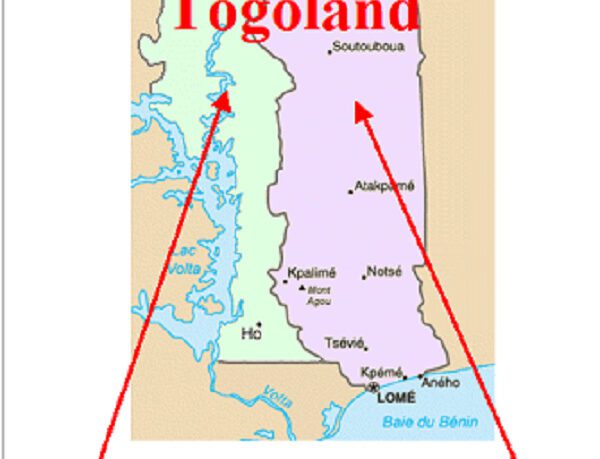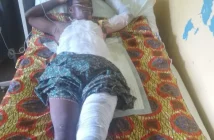The Volta region of Ghana was formed by the state union of the former British Togoland which was part of the German protectorate of Togoland. It was administered as part of the Gold Coast by the British and later renamed Trans-Volta Togoland.
Volta Region (or Volta), is one of Ghana’s sixteen administrative regions, with Ho as its capital. It is located west of Republic of Togo and to the east of Lake Volta. Divided into 25 administrative districts, the region is multi-ethnic and multilingual, including groups such as the Ewe, the Guan, and the Akan peoples. The Guan peoples include the Lolobi, Likpe, Akpafu, Buem, and Nkonya (now part of Oti region) people. This region was carved out of the Volta Region in December 2018 by the New Patriotic Party.
The native and largest ethnic group of the Volta Region (Togoland / British Togoland) are the Ewe people (68.5% of the population). They consist of several sub groups such as the Anlo Ewe, Tongu Ewe, Wedome and Avenor Ewe. Other ethnicities include the Guan people (forming 9.2% of the population), the Akan people (8.5%), and the Gurma people (6.5% of the population).
The Togoland Congress (TCP) a political party which was formed in 1951 to campaign for the unification of the Ewe people in British Togoland and French Togoland as a separate Ewe state, was defeated in the May 1956, which resulted in the unification of British Trans-Volta Togoland with Gold Coast, which later became independent as Ghana.
On 9 May 1956, a vote was conducted to decide the future disposition of British Togoland and French Togoland. The native and dominant ethnic group, the Ewe people, were divided between the two Togos. British Togoland inhabitants voted in favor of state union with the Gold Coast, and the Togo Ewe state was incorporated with Gold Coast.
There was vocal opposition to the incorporation of Togoland into modern Ghana, from the Ewe people who voted (42%) against in British Togoland, as the Ewe wanted the unification of the Ewe people in British Togoland and French Togoland as a separate Ewe state (modern Togo).
Recently, a campaign for the cessation of some part of the Volta Region from Ghana to be known as “Western Togoland” is being led by a group calling itself Homeland Study Group Foundation. The group is led by Charles Kormi Kudzodzi.
Moving away from the politics of the region, there are beautiful recreational centres and museums with rich historical culture.
Some of which are, the Volta Regional Museum, Mount Afadja, Mount Adaklu, Mount Gemi the Tafi Agome Caves, Tafi Atome Monkey Sanctuary the Wli Waterfalls, Tagbo Falls, Amedzofe Falls, Biakpa Falls and Caves, Kpoeta waterfalls (at Ho West District), Akpom Falls and limestone cave Logba Tota, the Snake Village Liate Wote and many more.
There is a popular saying the natives of the country Ghana, Ewes are more knowledgeable in a classroom. The numerous educational institutions in the region speaks well for the people.
Some are, the Ghana Telecom University College, University of Health and Allied Sciences, Evangelical Presbyterian University College, Ho Technical University, Nurses’ Training and Colleges of Education , Ho Nurses’ Training College, Keta Nursing and Midwifery Training College, Hohoe Midwifery Training College, Akatsi College of Education, Peki College of Education, Holy Spirit College of Education, St. Francis College of Education, St. Theresa’s College of Education, Dambai College of Education.
For senior high schools, below are a few in the region.
St. Paul’s Senior High School (SPACO)
Bishop Herman College (BIHECO)
Kpando Senior High School
Keta Senior High Technical School
OLA Girls Senior High School (Ho)
Mawuko Girls’ Senior High School
Mafi Kumase Senior High Technical School
Adidome Senior High School
Sogakofe Senior High School
Keta Business College
Wallahs Academy SHS (Ho)
REFERENCE
1. Retrieved from, https://en.m.wikipedia.org/wiki/Volta_Region




